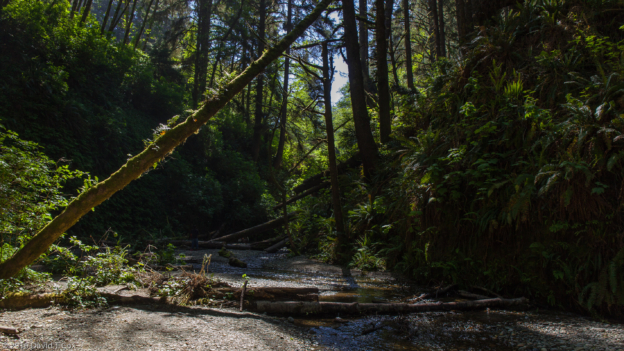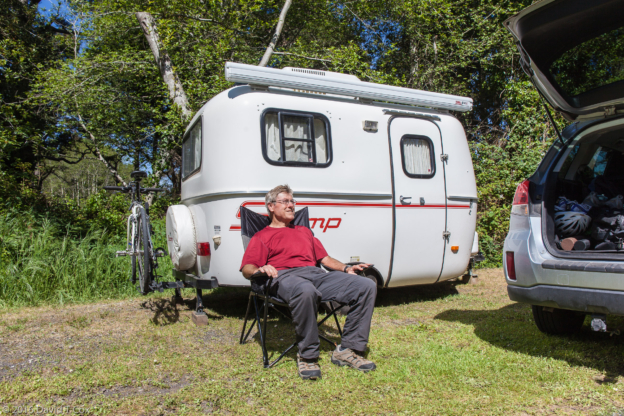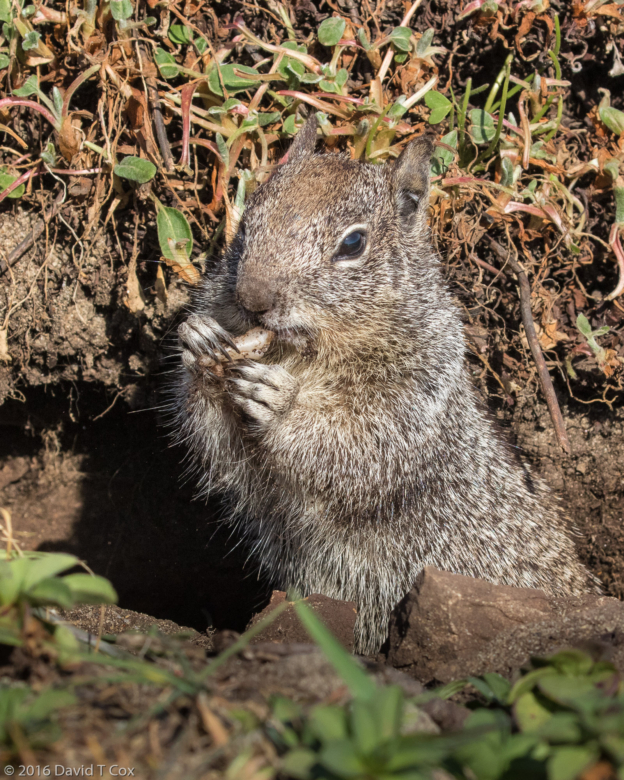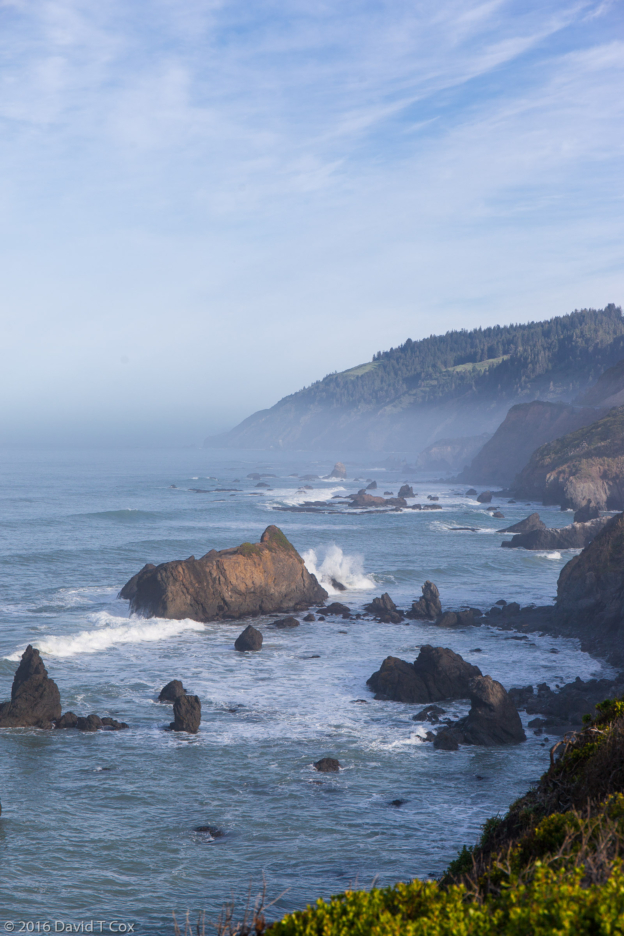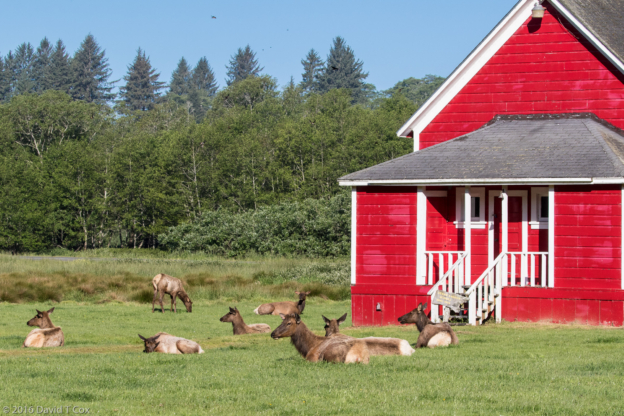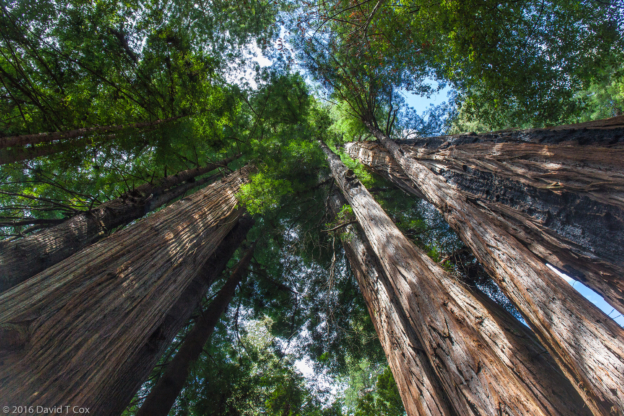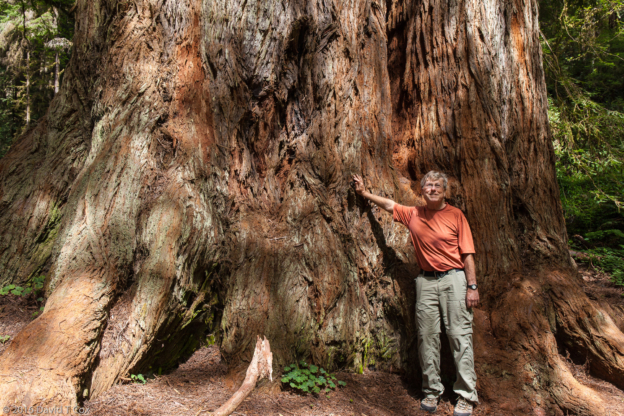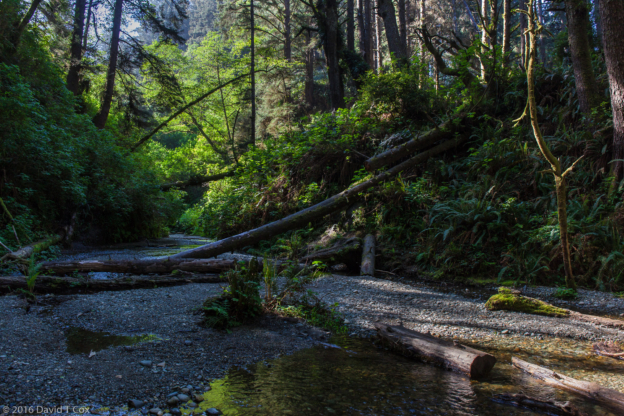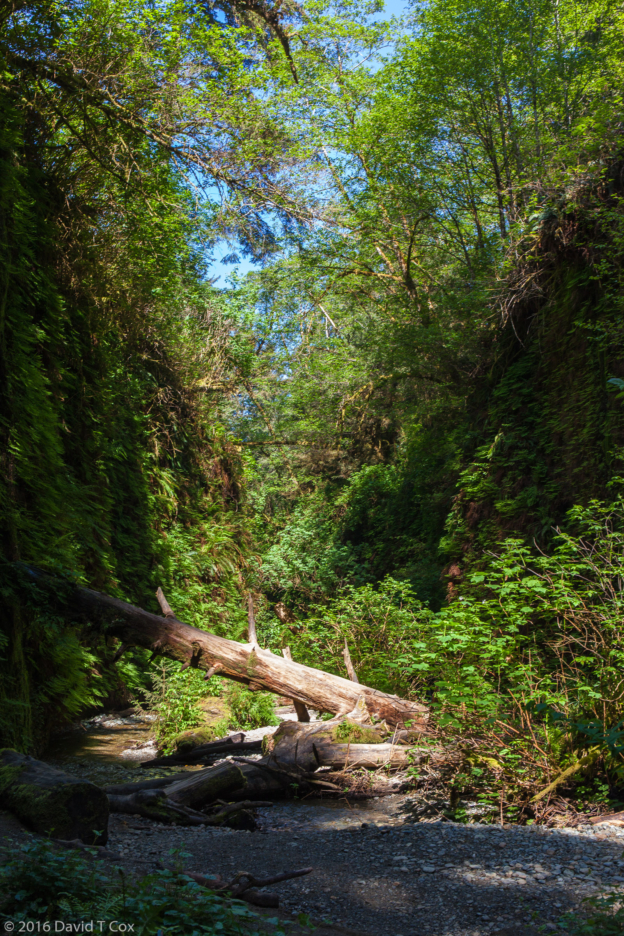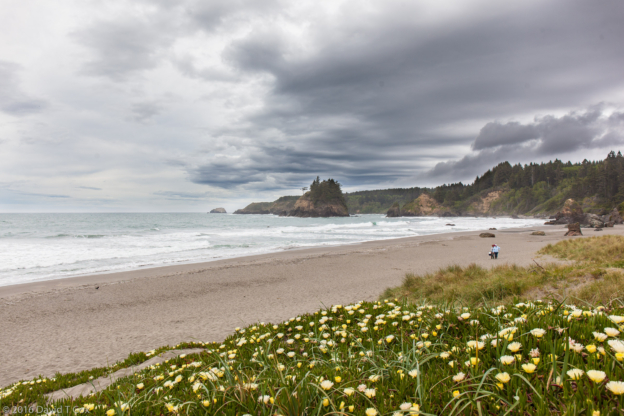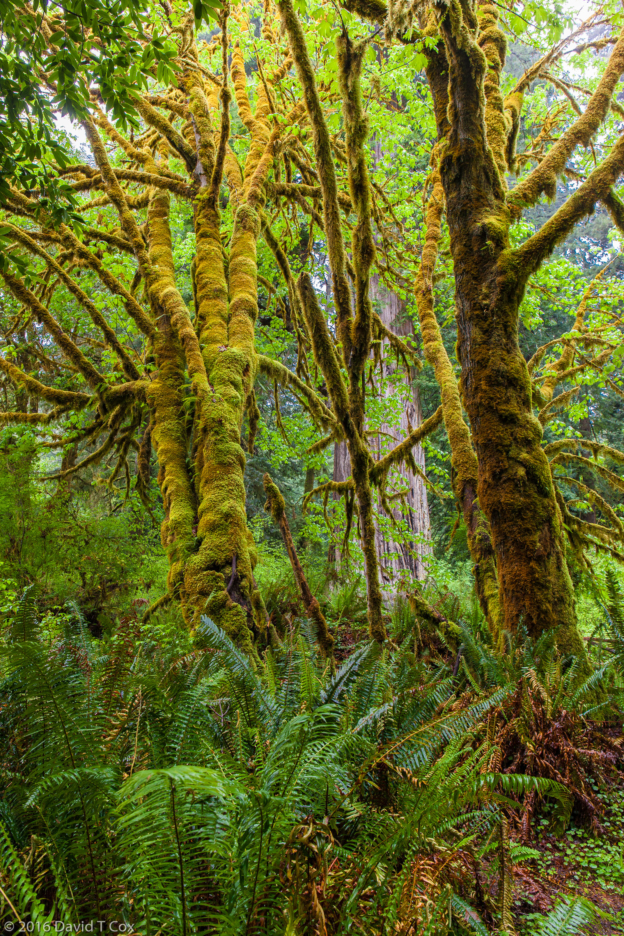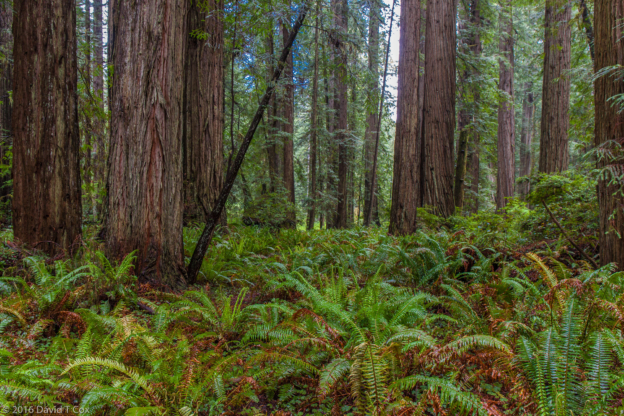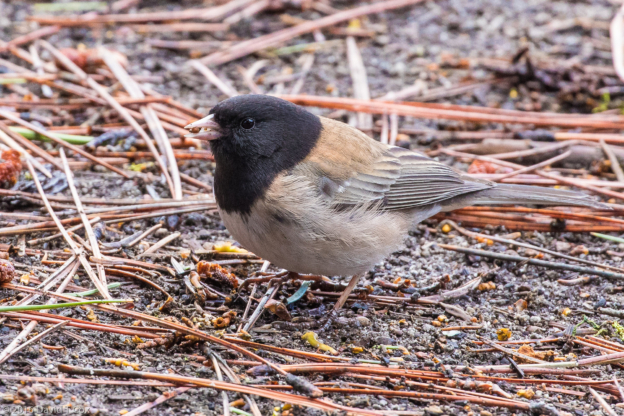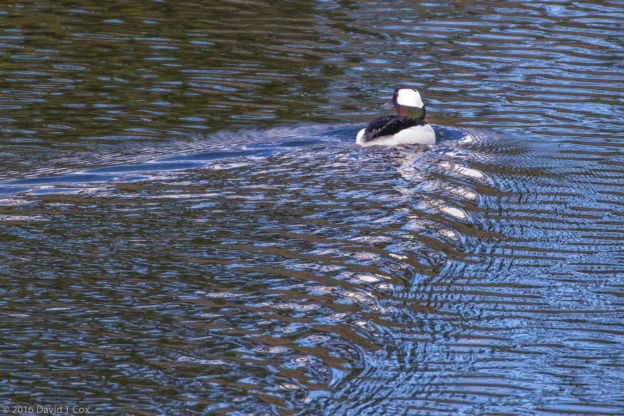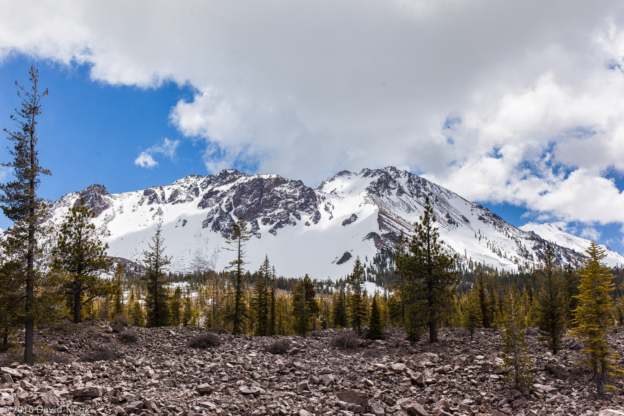All Photos Are Below the Travelogue Text
Click on Any Photo To Open Slide Show
To print the travelogue, right click anywhere on the page. Choose "Print" from your browser dialog box. You can choose Save to PDF in the browser print window.
Share your thoughts.
Email Dave - coxdavid55@hotmail.com
Hello. The Pacific coast by Ft Bragg and for several miles north comprises MacKerricher State Park, a wonderful string of small secluded beaches hidden in coves of rocky, bluff shoreline, with thunderous surf and breakers roiling over hundreds of sharp black rocky extrusions. Pacific harbor seals, cormorants and other seabirds sit on the rocks. On the small wildflower strewn and grassy bluffs over the shoreline are the usual sparrows and numerous California ground squirrels which were completely unmindful of humans. Two rivers flow into the sea through the park, both offering sandy shorelines busy with ducks, geese, mergansers and shorebirds. I spent a couple of days photographing wildlife and scenes, and a couple of hours bicycling the park. I would have stayed longer, but the weather report had 5 days of rain moving into northern California within a couple of days, and I wanted at least one rain-free day in the redwoods.
On Tuesday I drove the short distance north on Route 1 (combines with 101 part way up) to Trinidad; the wild coast and evergreen forests of the coastal hills are beautiful – and far less traffic and only low population centers. If I were required to live in California, I would want it to be here in the northwest. I am staying in the Sound of Sea RV Park a few miles north of the little town of Trinidad, on a bluff just a mile south of Point Patrick. The owner has a large and beautiful two story house, manicured lawns, an Australian cockatiel as a “guard bird” in the office (it makes lots of noise when someone enters) AND a white Maserati sitting in his carport. I no longer need to wonder whether some RV parks can be profitable.
Just a dozen or so miles north of here one enters a series of parks protecting the remaining old-growth coastal redwood forests; the system includes a number of California state parks, made up in large part of a number of donations by wealthy patrons in years past, and the National Park; the total extent is a hodgepodge of corridors connecting the major groves. Most of the system is administered as a joint California-Federal park. I was surprised to learn that the original (pre-19th century) “Old-Growth” redwood forests covered just 3,000 square miles (about 20 by 150 miles). The very mature trees of the old growth may be over 2,000 years old, over 20 feet in trunk diameter, and rise to well over 330 ft. (100 m), the tallest trees on earth. These forests have existed for 350 million years (before and during the dinosaur age). Due to logging, the old-growth forests now make up barely 5% of the original, or about 150 square miles (about 10 by 15 miles if all compacted). Restoration of cut areas would obviously take several thousand years just to re-create the largest trees. I now appreciate the “wisdom” of some of the more radical environmental groups that ultimately successfully stopped the logging, and resulted in the patchwork of protective parks that today exists.
My first evening, dining at the locally very popular Lighthouse Restaurant, I found myself in conversation with a wiry, elderly, thin man as we stood in the long ordering line. He is a current member of Earth First (the perhaps best known radical group taking on the loggers), who moved from LA to Trinidad 17 years ago to commit full time to the continued effort. I was surprised to learn they just succeeded in stopping some further logging some miles away. I did not know the redwood logging wars of the 70s continue.
A quick word regarding the relationship between the redwoods and the giant sequoias. Until this trip I assumed they were the same trees, and thought there was but one national park. I found I was ignorant. Though both are evergreens, and both have very red wood, and they both grow into giants, they are not even of the same genus taxonomically, though belonging to the same sub-family. The giant sequoias (genus sequoiadendrum), the most massive trees on earth, grow only in the drier mountains at around 6,000 feet, and stand like aliens among other scattered evergreens, with little undergrowth. The wood easily breaks, and is not useful as lumber. Groves of giant sequoias are found in Sequoia, Kings Canyon and Yosemite National Parks. Redwoods, confusingly of genus Sequoia, are the tallest trees on earth. They grow only along the northern California coast at just above sea level, in very humid, rainy, dense fern and mossy environments. They, unfortunately, produce excellent lumber, and so almost have met their demise from logging. The remaining redwoods mostly now are protected within a patchwork of the Redwood National Park together with several adjoining California State parks.
I spent my first afternoon exploring the length of the Prairie Creek Redwood State Park on a small paved road through the middle of old growth. I also hiked the short trail through the Lady Bird Johnson Grove in the National Park. The next day I drove the unpaved Davison Road through several miles of very dense redwood. The tree density was so heavy most of the travel seemed dark as night and headlights were required. The redwoods along this route all were well under 2 feet in diameter. Only on my return did I notice the very dark and giant stumps among the thickly clustered smaller trees – stumps 5 to 20 feet in diameter, and 5 to 20 feet high – upon inspection all with obviously flat tops. They sat black and house-sized within the forest. It was then that I realized this forest had been logged long ago, and twenty to thirty young trees now occupy the area once claimed by a single giant. I was passing through a graveyard of giants – the hulking black stumps indicating where the magnificent mature trees once stood, now almost completely hidden within a much too dense cluster of younger trees.
Eight miles up the Davison Road brought me to the end of the road, from where I hiked the short distance in to Fern Canyon. Fern Canyon is simply magnificent. The canyon walls, though not so high (maybe 50 feet), are sheer – the width at the bottom probably averages under 35 feet – the bottom is mostly a shallow stream which has created switchbacks every 50 feet or so, providing new vistas at each turn. The cliff walls are covered with up to 5 different species of ferns, producing a complete wall “papering” of hanging plants. The valley bottom hosts dozens of fallen trees, which crisscross the stream, or jut at odd angles and heights. Hiking the canyon bottom requires crossing the stream about 15 times, balancing precariously on narrow fallen trees, or climbing over giant logs, or simply trying to hit the shallowest parts where the water spreads over rocks. The ferns, along with the redwood trees, are said to be of the same types as created much of the ancient wet forests of the dinosaur era. A number of scenes from “Jurassic Park 2”, BBC’s “Walking with Dinosaurs” and IMAX’s “Dinosaurs Alive” all were filmed here. As I spent a couple of hours navigating the canyon, I thought about coming face to face with, not a tyrannosaur, but rather a flock of those little chicken-sized, chirping carnivores (Compys) from Jurassic Park.
On Thursday I obtained a permit from the National Park Service to hike the “Tall Trees Trail”, which permit allows visiting the grove of the largest redwoods which include the tallest trees. The visit starts with a 7 mile drive from sea level up to a little over 2,000 feet, then using the provided “combination” to pass through a locked Park gate, followed by a 7 mile steep descent on a dirt road to just below 1,000 feet elevation, where the car is parked. From there one hikes down another 800 feet along a steep trail into the Redwood Creek Valley, where exist the very tallest trees along a beautiful rocky stream. The “Libby” tree is along the trail, and for years was considered the tallest tree in the world; in recent years its top has died back, and several nearby trees have been discovered to be taller – the location of these is kept secret. Maple Trees, which grow closest to the streams, have trunks and huge twisted limbs completely covered in green-yellow moss, and sit among the large ancient ferns. A very majestic arena in a deep valley far from crowds of people.
On Saturday I traveled to Lassen Volcanic National Park, which I previously visited 3 years ago. The drive took twice what I anticipated, as first I experienced a flat tire (2nd within a year – picking up nails on old logging roads), having then to find a tire shop in tiny McKInleyville to repair it, followed by a number of road construction zones on the passes through the mountains, requiring flagmen and multiple stops. I had thought I would pass over a short coastal mountain range before again crossing the northern San Juaquin Valley before climbing to Lassen. I did not realize I was north of the valley, and basically the entire 200 miles was continual mountain roads; very scenic, but slow going.
Lassen Volcanic National Park is higher in elevation than I recall, and even my RV park, located well below the entrance, is close to 5,000 feet. Freezing nights, cold slushy rain with periodic pebble hail, and this morning snow, greeted me. The road through the Park, which climbs to close to 9,000 feet, is mostly closed (usually doesn’t open until mid-June), but is open up to Devastated Area which provides many of the great views. The Manzanita Lake has a number of Buffleheads, as well as Canada Geese. The Lassen Volcano famously blew its top in 1915, much of it captured on film by an intrepid early settler in the area. Huge rock slides, two succeeding massive pyroclastic flows, and car-size boulders catapulted for miles, devastated much of the eastern and northern flanks of the mountain, all clearly still visible today.
My initial goal on this trip was to visit all 7 of the California National Parks, of which previously I was acquainted only with Lassen. That goal now is achieved. I am uncertain exactly where I am heading from here, though probably I will stop again in Weed to visit their unusual brewery, and also in the Lava Beds National Monument which apparently has dozens of lava tube caves filled with bats, both along the California Oregon border. Later. Dave
- Point Arena Lighthouse & marine sanctuary, coast from Hwy 1 between Bodega Bay & Fort Bragg, CA
- Dave camping at Cleone RV Park, Fort Bragg, CA
- California Ground Squirrel, MacKerricher State Park, Fort Bragg, CA
- Hwy 1 & 101 between Ft Bragg & Trinidad, CA
- Roosevelt Elk, near Redwoods NP, CA
- Tall Trees Trail, Redwood NP, CA
- Dave before huge redwood, Prairie Creek Redwoods State Park, CA
- Fern Canyon Trail, Prairie Creek Redwoods St Pk, CA
- Fern Canyon Trail, Prairie Creek Redwoods St Pk, CA
- Fern Canyon Trail, Prairie Creek Redwoods St Pk, CA
- Tall Trees Trail, Redwood NP, CA
- Trinidad Beach, CA
- Maples around Big Tree, Prairie Creek Redwood St Park, CA
- Prairie Creek Trail, Prairie Creek Redwood St Park, CA
- Dark-eyed Junco, Lassen Volcanic NP, CA
- Lassen Peak, Lassen Volcanic NP, CA
- Bufflehead, Manzanita Lake, Lassen Volcanic NP, CA
- Chaos Jumbles rockslide, Lassen Volcanic NP, CA
To print the travelogue, right click anywhere on the page. Choose "Print" from your browser dialog box. You can choose Save to PDF in the browser print window.
Share your thoughts.
Email Dave - coxdavid55@hotmail.com
